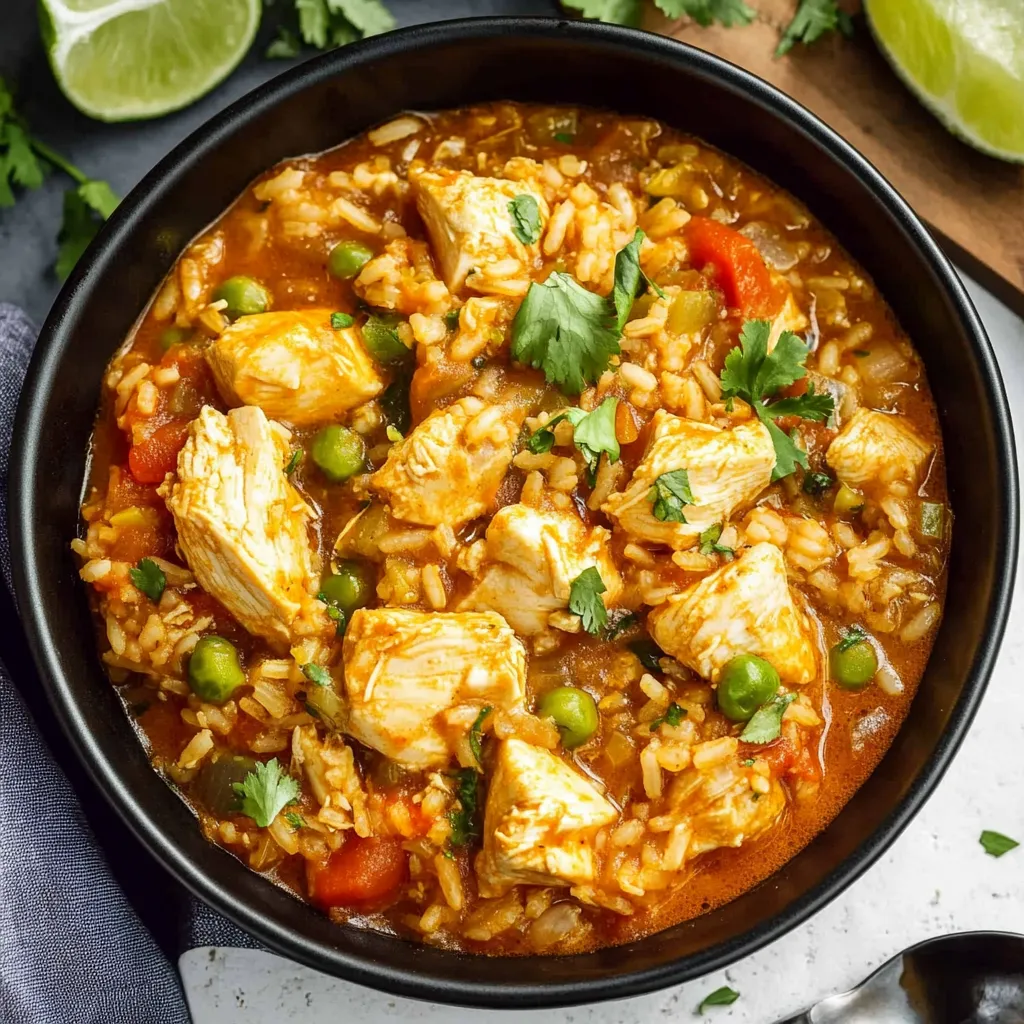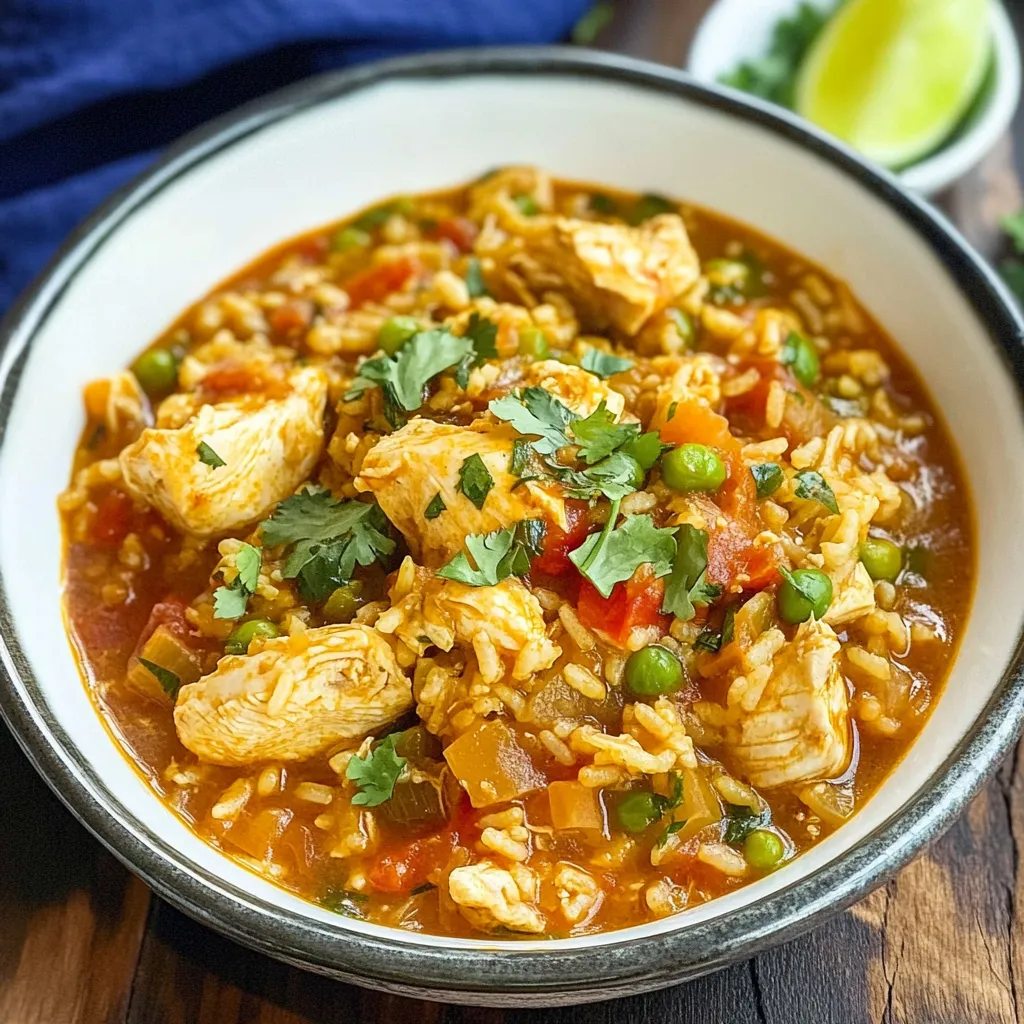 Pin it
Pin it
This hearty Asopao de Pollo combines tender chicken, flavorful rice, and vibrant vegetables in a comforting Puerto Rican stew that's both nourishing and satisfying.
During my years cooking Latin cuisine, I've found this dish consistently delivers exceptional flavor while being surprisingly simple to prepare.
Essential Ingredients:
- Medium-grain rice - creates ideal texture and absorbs flavors
- Sazón seasoning - provides authentic color and taste
- Fresh bell peppers - adds sweetness and texture
- Quality chicken broth - forms flavorful base
- Fresh herbs - brightens the finished dish
Detailed Instructions:
- Perfect the Chicken
- Pat pieces dry before cooking
- Don't overcrowd the pan
- Brown in batches if needed
- Remove when golden but not fully cooked
- Build the Flavor Base
- Soften vegetables until translucent
- Toast spices until fragrant
- Deglaze pan thoroughly
- Scrape up browned bits
- Master the Rice
- Stir rice to coat with oil
- Maintain gentle simmer
- Check liquid ratio periodically
- Let rest before serving
 Pin it
Pin it
Growing up in a Puerto Rican household, this dish was our go-to comfort food. The secret was always letting the sofrito (vegetable base) develop fully before adding liquid.
Temperature Management:
Maintaining proper heat ensures rice cooks evenly without becoming mushy. Low and slow creates the perfect consistency.
Seasoning Balance:
The combination of sazón and adobo creates authentic flavor. Start with less and adjust to taste.
This asopao represents the heart of Puerto Rican cooking - simple ingredients transformed through proper technique into a soul-warming meal.
 Pin it
Pin it
Mastering the Sofrito Base
The key to exceptional asopao lies in properly developing the sofrito. Allow onions and peppers to caramelize slightly, creating a deep flavor foundation. This step, passed down through generations of Puerto Rican cooking, transforms simple ingredients into something extraordinary.
Texture and Consistency
The perfect asopao should be soupy yet hearty. Unlike traditional rice dishes, it's meant to have a stew-like consistency. Adding liquid gradually and stirring occasionally ensures rice cooks evenly while maintaining the desired texture.
Regional Variations
Different Puerto Rican regions add their own twist. Coastal areas often include seafood, while mountain regions might add chorizo or pork. Each variation maintains the dish's soul while reflecting local ingredients.
Make-Ahead Strategy
Through catering experience, I've found asopao actually improves overnight. Store rice and liquid separately, then combine and reheat gently, adding fresh herbs just before serving.
Wine and Side Pairings
A crisp white wine complements the dish beautifully, while tostones provide traditional crunch contrast. For a complete meal, serve with a simple avocado salad dressed with lime and olive oil.
 Pin it
Pin it
Chef's Final Notes
- Add cilantro stems during cooking for extra flavor
- Rest 10 minutes before serving for ideal texture
- Finish with a squeeze of fresh lime
This asopao recipe captures the essence of Puerto Rican home cooking - comfort food elevated through technique and tradition.
Frequently Asked Questions
- → What if I can't find sazón seasoning?
- You can make your own by mixing equal parts ground coriander, cumin, annatto (achiote), garlic powder, and oregano.
- → Is this stew supposed to be soupy?
- Yes, asopao is meant to be somewhere between a soup and a risotto. Add more broth if it gets too thick.
- → Can I use brown rice instead?
- Yes, but you'll need to increase cooking time by 15-20 minutes and may need extra broth.
- → What can I substitute for adobo seasoning?
- Mix equal parts garlic powder, oregano, black pepper, and salt with a pinch of turmeric.
- → Can I make this ahead of time?
- Yes, but the rice may absorb more liquid. Reheat gently with extra broth to restore the original consistency.
